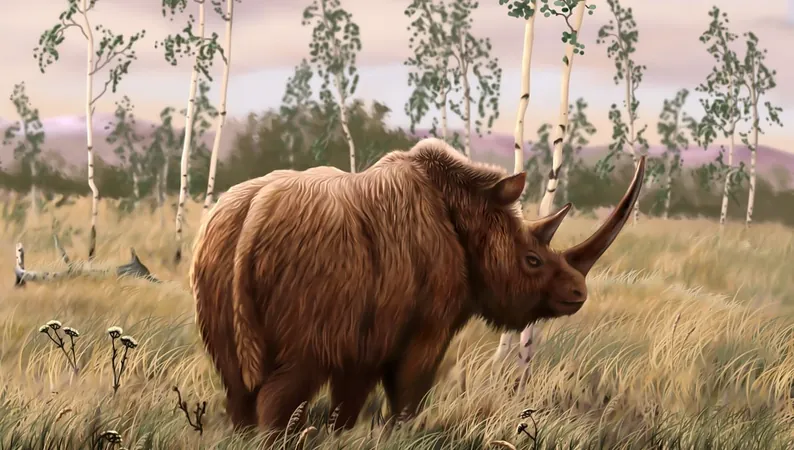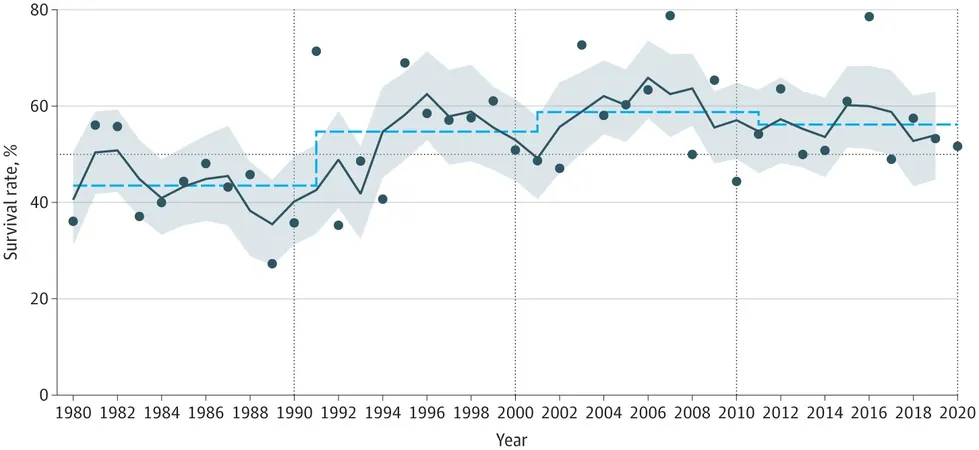
Stunning Discovery: 32,400-Year-Old Woolly Rhino Mummy Unveils Secrets of Prehistoric Life!
2024-09-19
Stunning Discovery of a Woolly Rhino
In an astonishing find, Russian scientists have delved into the mysteries of a remarkable 32,400-year-old woolly rhinoceros preserved in permafrost, akin to a prehistoric popsicle. This unique discovery has opened a window into the past, revealing fascinating insights into a species that roamed the Earth during the Ice Age.
The Abyisky Rhinoceros
Uncovered during the summer of 2020 along the Tirekhtyakh River in the Sakha Republic, this woolly rhino has been affectionately named the “Abyisky rhinoceros.” Its well-preserved state allowed scientists to examine its anatomy in greater detail than ever before.
Remarkable Preservation
Despite its age, much of the specimen’s soft tissues, skin, and even wool remain remarkably intact. Researchers determined that this young creature was probably no more than 4.5 years old at the time of its death—evidence that adds a new layer to our understanding of its growth and development. The woolly rhino's hair was discovered to be shorter and lighter, indicating its youth compared to the thick, dark fur typical of older adults.
Ecosystem Insights
Glimpses of the past also came in the form of tiny parasitic crustaceans known as water fleas, discovered nestled within the rhino's wool—a discovery hinting at the rhino's ancient ecosystem, which has drastically changed since then.
Anatomical Peculiarities
One of the most astonishing findings was a distinctive fatty hump on the back of the woolly rhino, described as an "anatomical peculiarity" never before identified in the species. This feature suggests a potential adaptation to the harsh, cold climate of the time. Similar fat deposits have been observed in woolly mammoths, another iconic Ice Age creature, implying that this fatty layer might have served as both a thermal insulator against the freezing temperatures and an energy reservoir during lean times.
The Woolly Rhinoceros: A Brief History
The woolly rhinoceros (Coelodonta antiquitatis), a large herbivore, once thrived in the northern parts of Eurasia, from approximately 3.6 million years ago until its eventual extinction around 10,000 years ago. Despite their prior abundance, only six woolly rhino specimens have been preserved and found in the Sakha Republic since the late 1700s, emphasizing the rarity of such discoveries. The most recent notable find was made just months ago in the Oymyakonsky District.
Other Significant Specimens
In recent years, other significant specimens have surfaced, including “Sasha,” a young woolly rhino unearthed between 2014 and 2015, which featured a striking strawberry-blonde coat, highlighting how well these animals adapted to their frigid environments from a young age.
The Future of Prehistoric Discoveries
As climate change continues to impact our world, permafrost is expected to thaw further, potentially revealing countless more prehistoric specimens. However, this is a race against time; once these ancient remains are exposed, they are at risk of rapidly degrading, making immediate scientific research vital.
Conclusion
These incredible discoveries from the past not only enrich our understanding of extinct species but also underscore the urgency of preserving our planet's fragile ecosystems before the remnants of our prehistoric history slip away forever. What other frozen treasures might be lurking in the icy depths? Only time will tell!

 Brasil (PT)
Brasil (PT)
 Canada (EN)
Canada (EN)
 Chile (ES)
Chile (ES)
 España (ES)
España (ES)
 France (FR)
France (FR)
 Hong Kong (EN)
Hong Kong (EN)
 Italia (IT)
Italia (IT)
 日本 (JA)
日本 (JA)
 Magyarország (HU)
Magyarország (HU)
 Norge (NO)
Norge (NO)
 Polska (PL)
Polska (PL)
 Schweiz (DE)
Schweiz (DE)
 Singapore (EN)
Singapore (EN)
 Sverige (SV)
Sverige (SV)
 Suomi (FI)
Suomi (FI)
 Türkiye (TR)
Türkiye (TR)